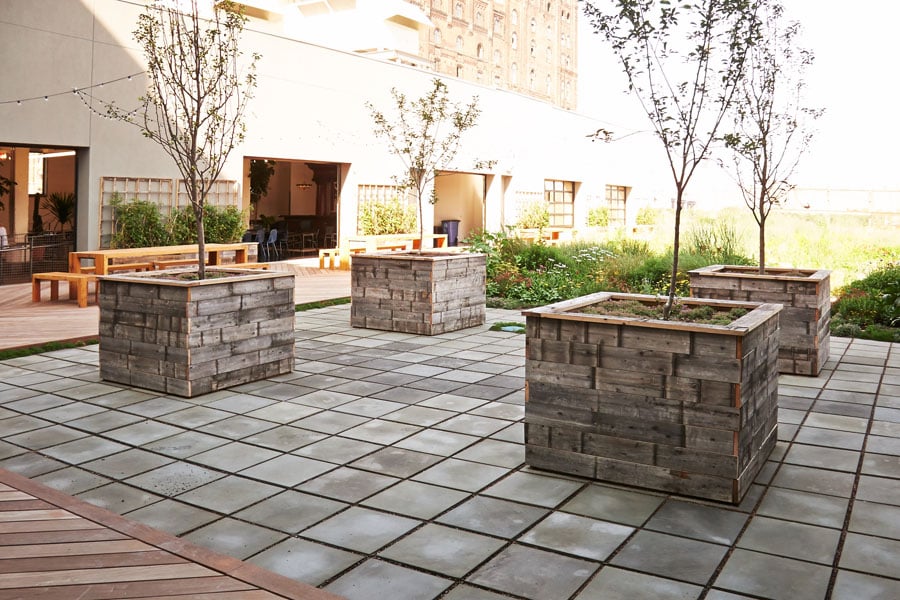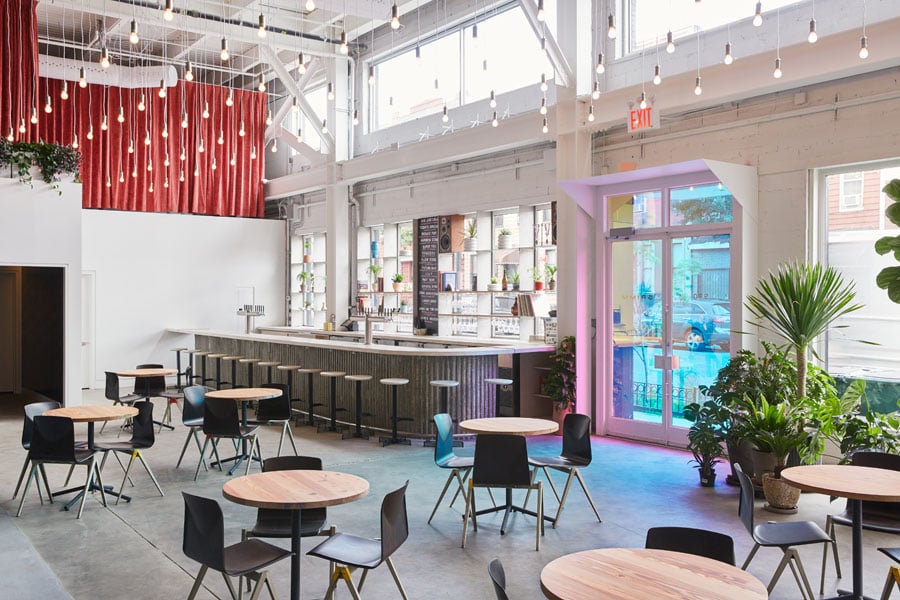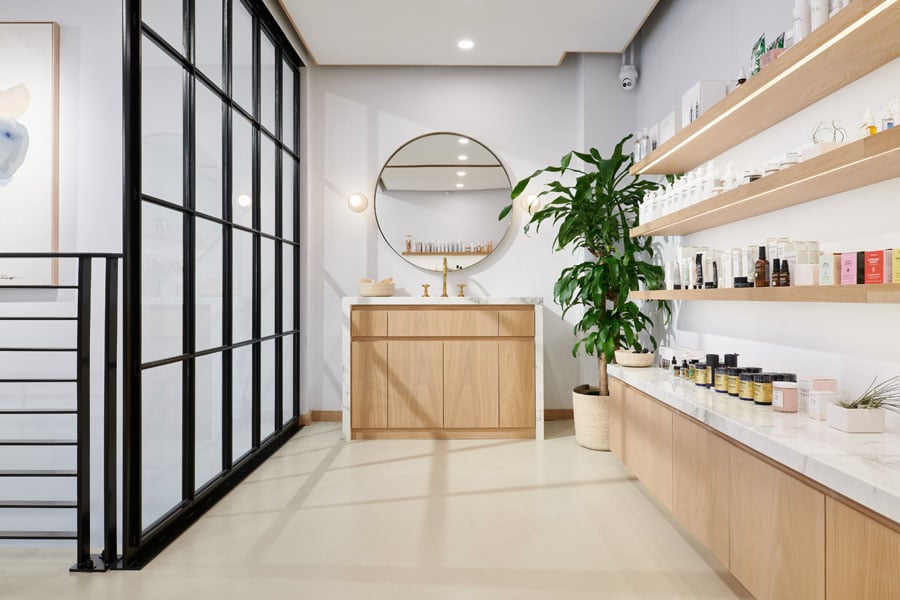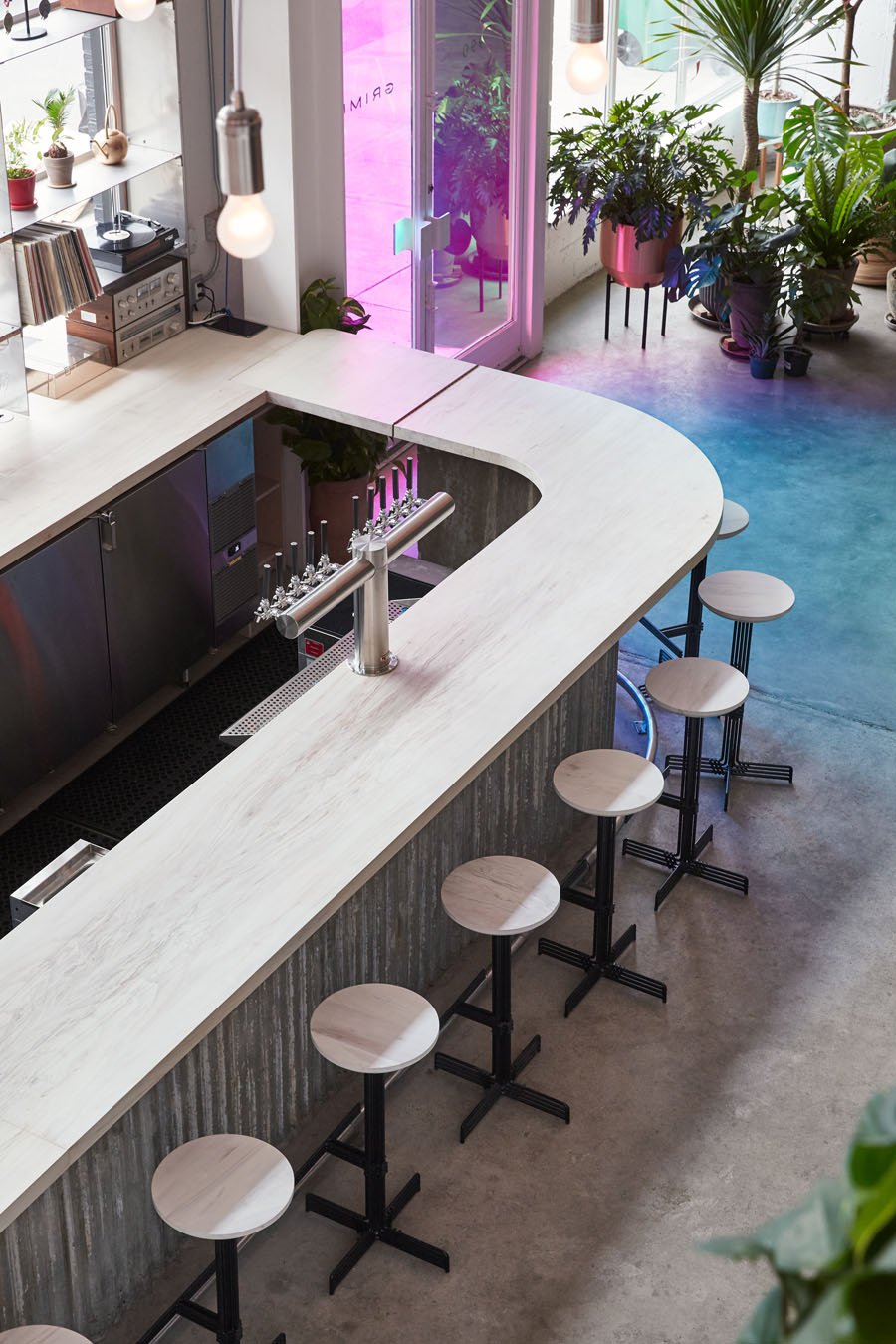
July 21, 2021
Tri-Lox Designs With Forest Health in Mind
The Brooklyn-based studio has designed for some of the world’s most innovative brands—all while supporting forests.

Sustainability has become a buzzword, but what does it mean to be truly green? For Brooklyn’s Tri-Lox studio, it’s bringing new life to discarded materials while saving them from the landfill and launching new designs, in some cases for the city’s most ambitious cultural touchstones. Launched by childhood friends Alexander Bender, Ellis Isenberg, and Tim Knight, Tri-Lox cut its teeth working with Big Reuse (formerly Build It Green! NYC) and other non-profits before word-of-mouth—and an impressive portfolio—led to commissions for Shake Shack, retailer Rag & Bone, a wildflower-fringed rooftop for Vice’s Williamsburg HQ, and the wood-paneled office space of the Howard Gilman Foundation.
For NEST, their installation at the Brooklyn Children’s Museum, the team built an interactive playscape in homage to the intricate dwellings of the baya weaver bird, made from upcycled wood culled from NYC water towers and woven into a climbable exterior and a basket-like interior.

Initially gathering raw materials from old barns and structures in Connecticut and upstate New York, they have since branched out to source innovative materials unique to commission locations. For example, on a recent project in Bermuda, the team took inspiration from the island’s indigenous white Bermuda stone and white maple to craft a modern storefront with island charm.
For their newest high-profile project, a collaboration with Situ Studio, they supplied and milled the materials for the laminated wood and curved benches of Little Island’s amphitheater. Utilizing Black Locust, a durable resource native to the Northeast, which the studio frequently recommends to landscape architects as an alternative to rainforest timber, they offer proof of concept for designers hesitant to use less trendy, and more sustainable, local wood varieties.

“Everything that we do at Tri-Lox is in service of promoting forest health,” says Bender, explaining that they often work directly with foresters. “What we’ve done, from the beginning, is reclamation,” he says, referring to early days when the team road-tripped across the country in search of rare and endangered raw materials like California redwood and Alaskan cedar, much of it destined for the mulcher. “We have a huge inventory of water towers that are deconstructed and stacked and drying and ready to be turned into product,” he jokes, explaining the reason why their Greenpoint, Brooklyn and Pennsylvania warehouses are both overflowing.
“We’re looking to be a sustainable brand, with the idea that what we provide supports forests and comes from sustainable management plans,” explains Isenberg. “By ensuring forests are healthy, makers and builders can enact positive change,” he elaborates, referencing the tree’s ability to sequester carbon, which is key to fighting climate change.

Education is core to Tri-Lox, and in 2020 they launched Fieldworks, a set of applied research projects to study wood innovations, launching workshops for foresters, architects, craftspeople, and academics. The ultimate goal is to educate designers that the over-sourcing of any single material—for example, the white oak interiors clogging your Instagram feed—creates a ripple effect on the ecosystem. “We realized that foresters and architects have little to no dialogue, so we’re operating as an intermediary between the design and the conservation communities, to give each the tools to understand how to best situate in the industry.”
Tri-Lox is also developing a lab to test under-utilized techniques, including funguses that mimic the marble patterns of stone, encouraging affordable, eco-safe ways of using regenerative materials (wood) instead of extractive resources (marble).
The team is now working on a series of hospitality projects, including designs for the upcoming McCarren Park bar in Williamsburg, Brooklyn. As their reputation grows, Tri-Lox continues to look for inventive ways to reuse materials and support forests while keeping in mind development needs, which, according to Bender, are inescapable. “How can you have a balance? That, to us, is at the crux of what sustainability means.”
You may also enjoy “For Asheville, North Carolina–based Samsel Architects, Sustainability Is an Ongoing Process”
Would you like to comment on this article? Send your thoughts to: [email protected]
Register here for Metropolis’s Think Tank Thursdays and hear what leading firms across North America are thinking and working on today.
Recent Viewpoints
Viewpoints
Navigating the Path to Net Zero

















